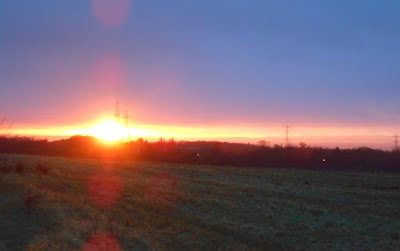No idea on purpose of this bird scarer, the main users of the open area are Curlew (22 on 6 April) and corvids, not sure what threat they are perceived to be!
Updated shots from Minewater treatment scheme (MTS) below, some recent harvesting of reeds, nicer diversity of habitats in the three tanks with bits of open water and some denser reeds - Mute Swans look set to breed again, also with some other waterfowl. 120 Pied Wags were roosting in the top tank reed bed, site of a large Swallow roost last two years. These will hopefully continue, though increased disturbance round the MTS once houses on site will likely impact on some of the other breeding bird there, including ducks.
I'm now in contact with Stuart MacPherson, Biodiversity Officer at East Lothian Council, and have agreed to supply full bird data (#sescotatlas breeding birds, WeBS counts, etc.) - no requests have been received by me from developers; Bryan Hickman has also provided the following list of odonata (dragon/damselflies) at the main pond, where TWIC also had a recording day which we attended in 2009. An important colony of Grayling butterflies is also located in same area.
Emerald Damselfly ( Lestes sponsa )
Common breeding species every year.
Large Red Damselfly ( Pyrrhosoma nymphula )
Scarce breeding species not recorded every year but has been seen
ovipositing.
Azure Damselfly ( Coenagrion puella )
Common breeding species every year.
Common Blue Damselfly ( Enallagma cyathigerum )
Common breeding species every year.
Blue-tailed Damselfly ( Ischnura elegans )
Common breeding species every year.
Common Hawker ( Aeshna juncea )
Small numbers breed each year.
Four-spotted Chaser ( Libellula quadrimaculata )
Small numbers breed each year.
Common Darter ( Sympetrum striolatum )
Large numbers breed every year.
Red-veined Darter ( Sympetrum fonscolombii )
Single record of this migrant species and the second for Lothian.
Black Darter ( Sympetrum danae )
Adults recorded one year only with a pair in tandem.
A number of southern species are moving north and with suitable management this area could be important in the future.
Concluding with some sunset shots from the top of the site at dusk on 4 April, stunning views looking out over the Forth, small video (MP4).
Postscript - it's all over, earthworks commenced mid-July 2018 and the main pond was filled in during fourth week of August, the end of an era for a great site for wildlife :(


















